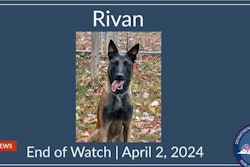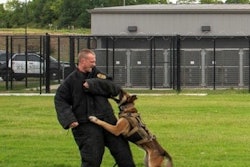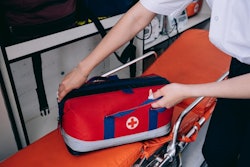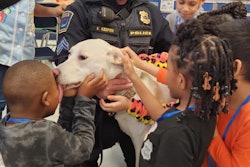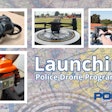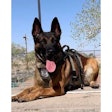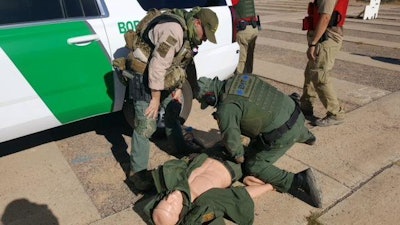 Medical training is only one component of a TacMed program, which should be a broad and well-developed plan.Sydney Vail
Medical training is only one component of a TacMed program, which should be a broad and well-developed plan.Sydney Vail
Tactical medicine is not just rendering aid to a wounded officer in the field, nor even providing training or equipment. It is a comprehensive plan and should be developed as such.
When shaping out a TacMed program, a department needs to see the big picture.
“Tactical medicine is not any one person, and it's not any one entity within law enforcement. It's an actual program,” says Sydney Vail, M.D. “It's a system that allows the training, the consultation, the upkeep of skills, and the deployment — but deployment is just a part of it,”
Vail is a former Arizona Department of Public Safety SWAT tactical medicine provider and also served as the US Border Patrol EMS director for the Tucson Sector in Arizona. In his day job, he has spent decades as a trauma surgeon. Past that, he is also a US Army Reserve lieutenant colonel who deploys near the front lines as a trauma doctor.
“Some agencies are just happy they have a trained medic, a retired military person, or a paramedic that decided to go over to the law enforcement side and provide them resources during deployment. That's only one segment of tactical medicine,” Vail adds. “But don't get me wrong. It's better than nothing. We would rather have an all-encompassing program.”
Many think of tactical medicine as having someone on hand during an operation trained in tactical combat casualty care (TCCC), but a true TacMed program is far more complex.
A true TacMed program involves individuals practicing the field, maintaining certifications, and communicating with leadership as well. When working with Arizona DPS SWAT, Vail even consulted with the state attorney general. Yes, someone should be digging into legal ramifications and reducing the risk profile of the department and team.
If a tactical team deploys, officers may get injured but likewise so can civilians or even bad guys. What are the legal issues? Will a bystander or bad guy sue the department? Topics like those necessitate working through every aspect of a department’s TacMed approach, again with emphasis on building a comprehensive plan.
Seven core areas combine to create a true tactical medical program, according to Vail and the International School of Tactical Medicine. Those areas are:
- Medical oversight
- Medical contingency planning
- Operational support/Tactical Emergency Medical Support
- Quality improvement
- Team health management
- Training and education
- Medical equipment acquisition and maintenance
Drawing from his expertise and experiences, Vail has 10 tips to share related to tactical medicine and creating a TacMed program. Those include:
1. Commit to the TacMed program.
A department must commit to the TacMed program and increasing officer safety so officers know someone’s got their back if an injury occurs. Vail says administrations need to be open-minded and willing to be educated on all the aspects related to creating a TacMed plan — equipment, peer review, legal, training, deployment, and more.
2. Fund the program every year.
Resources must be sought out to fully fund the TacMed program, training, and the provision of an individual first aid kit (IFAK) for every officer. In Arizona, his team was able to use RICO money, and Vail says in most states there will be money set aside from drug-related or criminal-related confiscations. Agencies have to know how to apply for those funds. There are federal grants as well.
“Who's going to turn down medical, they may turn down a new Bearcat. Your Bearcat is only five years old, they may turn that down, but who's going to turn down medical gear? That's a necessity,” Vail explains. “A lot of states have money sitting untapped, and that is a way to get funded.”
3. Train, train, train.
TacMed training needs to be done regularly, not just for tactical teams but for all officers. While he was with the Arizona DPS team, Vail had them train on medical nearly every time they went to the range. Medical scenarios, such as dragging a wounded officer off the X or dealing with a civilian who was down, were part of the range time.
Vail even suggests regular officers, those not on a tactical team, should also be exposed to similar training.
“Every year, every time you qualify, you should be doing medical scenarios, putting on a tourniquet, stuffing gauze,” he says. “Is it enough? Probably not. Is it better than nothing? Yes. At least they get muscle memory, how to deploy a tourniquet, how to stuff a wound full of combat gauze, how to potentially do some other medical interventions.”
4. Seek out LE-friendly medical personnel.
Building relationships with potential medical assets is not difficult. As Vail points out, police officers are in local hospital emergency rooms all the time. Officers get to know doctors, and others on the medical staff.
“So, to me, it's just keeping an open mind and starting a conversation,” explains Vail. “’You know what doc?’ ‘You know what medic?’ ‘You know what, PA?’ ‘You've been really good to us. We have an opportunity, is there any chance you'd like to become involved?’ That opens the door right there.”
5. Train in reality scenarios.
Vail admits this approach can be controversial, but he suggests applying a tourniquet to an arm so an officer can see how long he or she can stay in a gunfight, how long they will maintain function with that arm whether the dominant hand or support hand, handgun or rifle. With Arizona DPS, he did just that while running the team through a shoot house.
“They had no idea how long they could stay in a fight with a tourniquet because everybody says once shot, you're out. No, no. That's not what the military trains. That's not the way law enforcement should train,” adds Vail.
What that taught officers was just how long they could continue fighting once wounded. For some, it was four minutes, others eight or nine minutes.
6. Medical personnel should be part of planning big operations.
A doctor or medic with mass casualty experience should have a seat at the table for contingency planning of big operations. In the case of preparing for riots in Phoenix, Vail was part of the planning for the medical contingency — where to stage ambulances, capabilities, and what trauma centers would be the best option.
7. Incorporate medical training into force-on-force training.
Vail suggests using a paintball gun to ‘tag’ an officer during training scenarios so officers have to perform self-aid. They can also practice buddy aid with partners. When Vail first added a paintball gun to training, nobody knew it was coming and was a clear visual indication of what body area was hit.
“It just made for a better scenario because with a lot of the Simunition, when it hits your vest you don't know you got hit. A paintball hits you, you know you got hit,” he suggests. “Plus, I can direct exactly where I want it, when I want.”
8. Every officer needs a medical card.
The veteran trauma doctor says every officer needs to always carry a card with their medical details in a predetermined position. That could be a rear pocket near a wallet, or in the case of his DPS team, a second card was also carried in officers’ vests. If an officer is wounded or injured and needs medical attention, pertinent medical details are at hand. Keeping those medical cards sealed in plastic, only to be opened in case of an emergency, can also help an agency navigate federal HIPAA privacy requirements.
9. Have a doctor assist officers in getting through the local health care system.
Law enforcement professionals commonly will get to know emergency room staff. But part of planning for TacMed should also involve knowing who can step forward almost as a liaison between the healthcare system and the officer, officers, and department when an officer is injured. That can be done in advance.
10. Hold open forums.
Transparency and communication with the local community are also part of building a TacMed program. Vail suggests departments host open forums to demonstrate how there is a risk reduction when a department deploys medical personnel with their special teams so that medical care is only seconds away from providing care to the officers, public, bad guys, etc., rather than waiting for a longer response.






